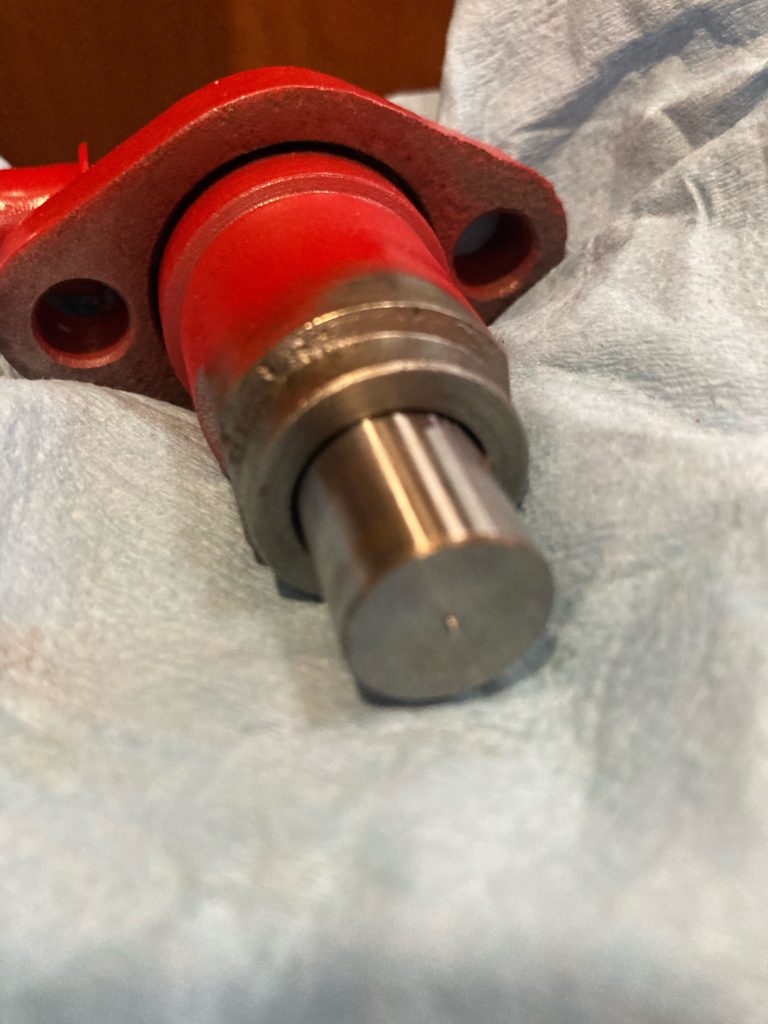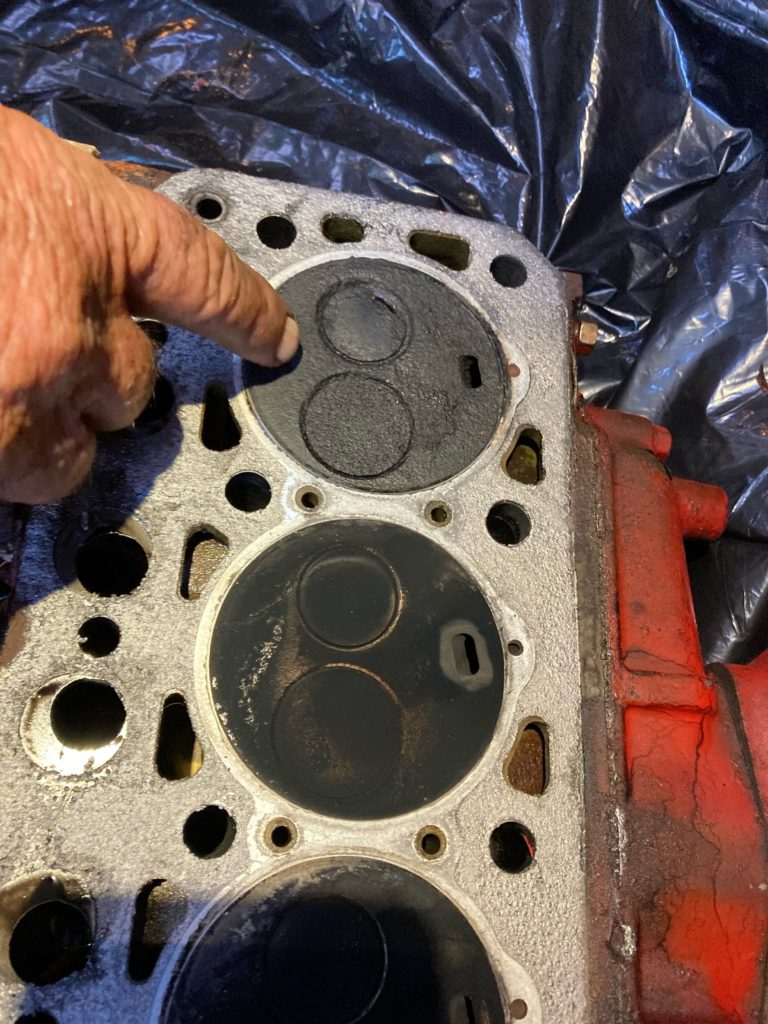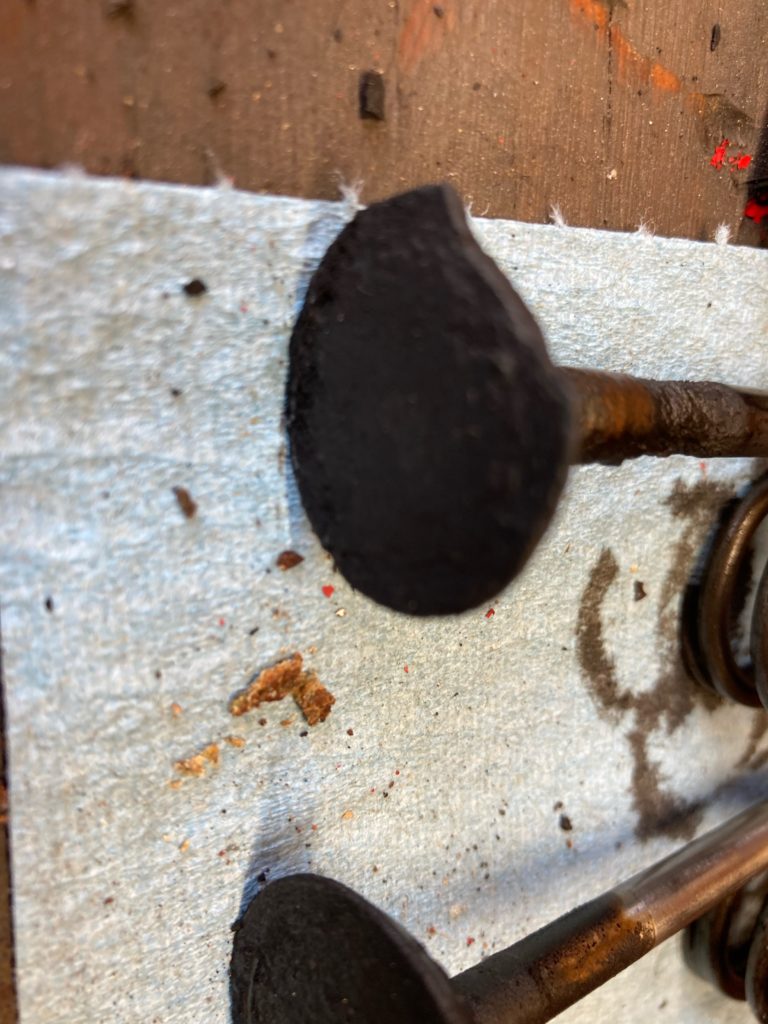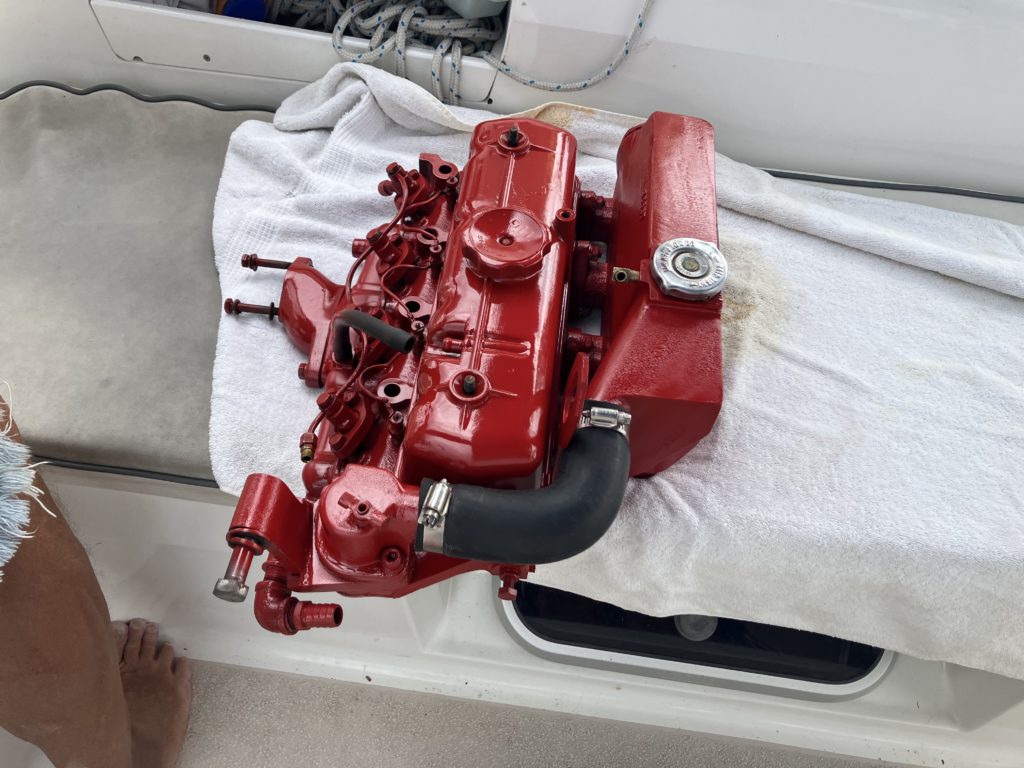“Diesels have an unrivaled record of reliability in the marine environment.”
— Nigel Calder, “Marine Diesel Engines: Maintenance, Troubleshooting, and Repair”
“The test of the machine is the satisfaction it gives you. There isn’t any other test. If the machine produces tranquility it’s right. If it disturbs you it’s wrong until either the machine or your mind is changed.”
— Robert M. Pirsig, “Zen and the Art of Motorcycle Maintenance”
As Kay wrote in her blog post Night Passage to Marathon, we limped in to our resort marina back in August with an engine pouring out white smoke and producing only low power on a twenty-hour overnight passage. It was an ordeal, but we had made it to our new home. After settling in at our marina, we started researching mechanics who could come and fix our engine. The closest Westerbeke reps were back in Miami and Fort Lauderdale who were not particularly interested in helping us when we were bobbing around on the anchor at No Name Harbor for five nights. I knew we could do better. We had to do better.
One morning, I chimed in on the Boot Key Harbor Cruisers’ Net that is broadcast every morning on VHF channel 80. I asked for help. The one mechanic that everyone recommended was the famous Diesel Don. I called him on the phone, and made an appointment to have him take a look.
Diesel engines, such as our Westerbeke 42B Four, are typically four-stroke internal combustion machines that operate according to four simple processes: suck, squeeze, bang, blow. If any of these processes do not occur, the engine does not run.
Suck: the piston sucks a mixture of air from the intake manifold and atomized diesel fuel from an injector.
Squeeze: the piston squeezes the diesel and air into a very small volume, on the order of 400 psi, which also heats them to a very high temperature.
Bang: when the temperature exceeds the self-ignition temperature, the mixture explodes with a bang, driving the piston downward with the expanding gas and rotating the crank shaft.
Blow: the piston blows the exhaust products out the exhaust manifold and toward the muffler.
Over a series of visits, Diesel Don tried all the less-expensive tests and fixes that could cause the white smoke and low power output conditions. First, he took off the valve cover and adjusted all the valves. Wasn’t that. (Please note, we are going to show some of the guts of the diesel engine below. If you are squeamish about engine guts, please avert your eyes.)

Next, we replaced all of the injectors. Wasn’t that.

Then, we decided to do a compression test of each cylinder. Cylinders 1 through 3 were in spec, but cylinder 4 had no compression whatsoever. That is, no squeeze.
There is a short list of conditions that could cause a lack of compression in one cylinder and not the others: blown head gasket, bad valves, bad piston rings, and broken piston connecting rod. Resolving any of these issues requires major engine surgery. Resolving some of them would require removing the 450-pound engine from the boat somehow and taking the engine apart in a machine shop. I hoped we could avoid having to remove the engine. That would mean towing the boat to a boatyard with a big crane to get the engine hoisted out, and then living in a hotel for week or two while the engine gets fixed.
Don and I rolled the dice and decided to remove the cylinder head at the marina, since maybe it could be fixed in place. The photos below showed the problem immediately: broken exhaust valve on the number four cylinder. The diesel fuel and air mixture was being pushed out the exhaust without being combusted, which created the white “smoke” we were seeing.


Don and I reviewed the parts manual for our engine, and he made me a long list of parts to order from Westerbeke. The list included replacing all of the valves, not just the broken one.
Two weeks and a thousand bucks later, the parts were in. Don had the engine back together and painted. We started it up, and it ran as good as new. No white smoke. Power to spare.


“Are you happy?” asked Don.
“Yes, I’m happy!” I replied.